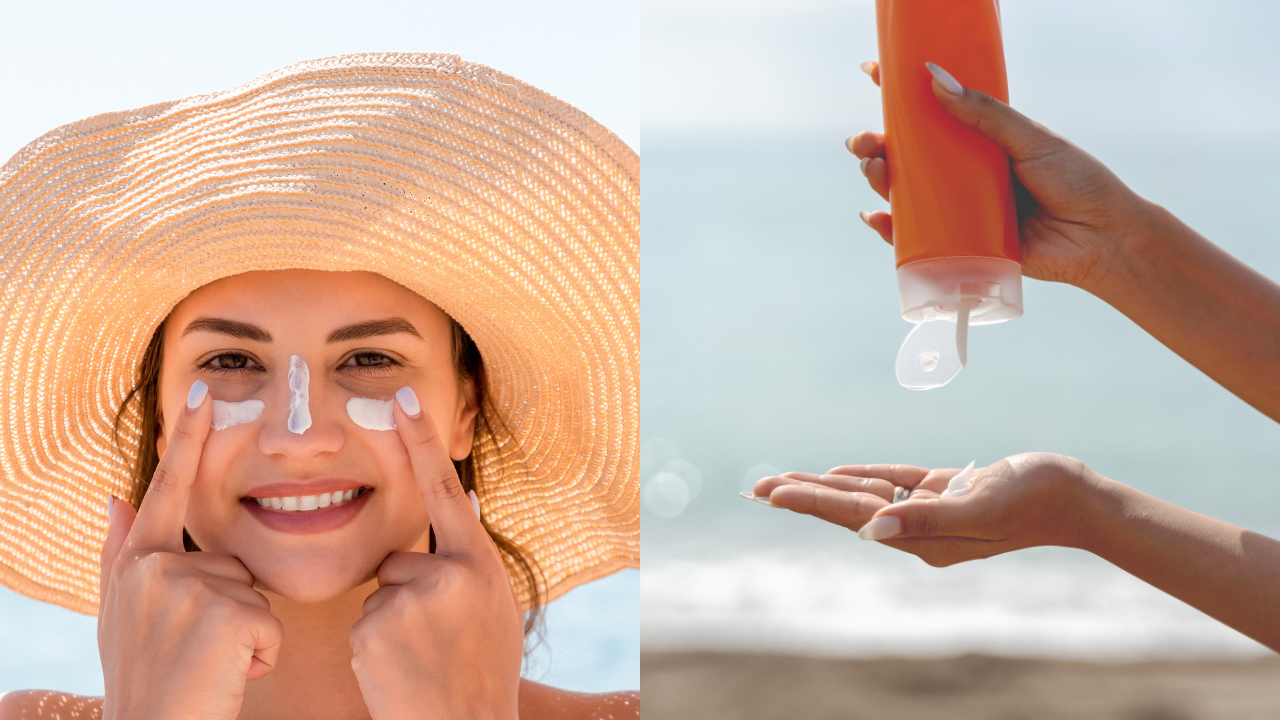
If sunscreen is not an essential part of your skincare routine, you are possibly doing it all wrong. Even in the sensational Korean skincare routines that we all love, sunscreen holds high significance. Its application is as crucial as a moisturiser to delay ageing. One more reason you need sunscreen is because it makes its way into most of the anti-ageing skincare routines. Are you already wondering what makes it a must-have? Besides saving you from sun damage and premature ageing, it protects you from skin cancer, hyperpigmentation, melasma and more.
Now, while you hunt for an effective sunscreen, numerous options out there might confuse you. Your job is to indulge in proper research before deciding on a brand, making sure it delivers the best results. To start with, look for the Sun Protection Factor (SPF) in each product. SPF measures protection against sunburn from ultraviolet (UV) rays. An SPF 30 would take 30 times longer for the sun to burn your skin than if you don’t use any sunscreen. Reportedly, SPF 30 blocks about 97% of UVB rays, SPF 50 blocks about 98% and SPF 100 about 99% of rays. However, no sunscreen blocks 100%.
Moreover, “SPF only refers to UVB rays. So, you should look for broad-spectrum sunscreens—this means they protect against both UVA and UVB,” reads a GoodRx report reviewed by Sophie Vergnaud, Senior Medical Director, GoodRx Health.
To understand better and make it easier for you, we speak with Dr Renita Rajan, Founder of CHOSEN, who offers invaluable insights into everything sunscreen.
Can we use the same sunscreen for the face and body?
Dr Rajan says that many body sunscreens contain comedogenic ingredients—substances that can clog pores and lead to breakouts. These formulations often include high lipids aimed at enhancing waterproof properties. “If a product is specifically labelled for body use, it’s best to avoid using it on the face,” she cautions. “There’s a reason for the product being marked as such.”
That said, Dr Rajan notes that outside of those specifically designated for the body, using the same sunscreen for both areas can be acceptable, provided it’s not a spray. “Spray sunscreens can be detrimental, both for your health and the environment. Aerosol sprays release sunscreen chemicals into the air, which we certainly want to avoid inhaling.” She firmly states, “Spraying body sunscreen on your face is a definite no-go.”
Why do different formulas matter?
When it comes to efficacy, Dr Rajan stresses the importance of formulation. “It is possible to create both terrible and terrific sunscreens using the same active filter. What distinguishes a good sunscreen from a poor one are the formulation and additional active ingredients.”
Furthermore, while SPF and PA factors are critical indicators of sun protection, D Rajan points out that one does not need the same percentage or type of filters to achieve effective sun protection. “Less is less only in terms of usage volume. SPF/PA ratings are calculated based on a specific application volume—approximately 1.5-2 mg/cm², which translates to about 1.5-2 ml for the face and neck when using a lotion or cream.”
But she says that using more product can yield better protection. “For example, applying two coats of an SPF 30 sunscreen can elevate your protection significantly, potentially offering benefits equivalent to an SPF 60.”
How much sunscreen do we need?
The amount of sunscreen required is another area that often confuses users. Dr Rajan recommends using at least 1-2 ml for the face and neck but acknowledges that determining this volume can be challenging. “This is why tools that measure application can be incredibly practical and useful,” she explains.
Thanks to advancements in sunscreen technology, many products are now tested for 8-hour immersion, meaning they can provide lasting protection for extended periods. “For most people, sunscreen application can be done once or twice a day,” she reassures. “And let’s not forget that protective clothing and seeking shade also play a vital role in sun safety.”

